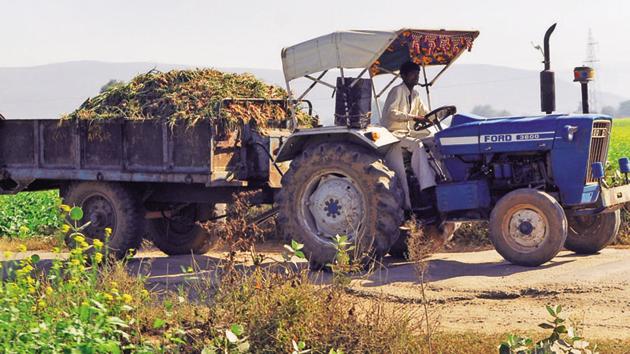Putting the $100 billion agricultural exports target in perspective
This, the policy says, is to be achieved through a diversification of the export basket including indigenous, organic and ethnic exports.
The Union Cabinet approved the Agricultural Export Policy, 2018, on Thursday. The policy is aimed at doubling agricultural exports from the current level of $30 billion by 2022 and increasing them to $100 billion in the “next few years thereafter.” This, the policy says, is to be achieved through a diversification of the export basket including indigenous, organic and ethnic exports. The export push will be aided by institutional mechanisms to ease market assess and non-tariff barriers. Interestingly, the elements of the policy have been spelt out in more generic terms than the objectives. Probably more details will be released later. HT has analysed India’s agricultural exports statistics to put in context the $100 billion target the policy has set for itself. Three important points can be made on the basis of this analysis.

1. Agricultural export earnings are sensitive to global prices: According to data from the Centre for Monitoring Indian Economy (CMIE), India’s exports of agriculture and allied activities were valued at $38 billion in 2017-18. These values were much larger in the earlier years. Agricultural exports had crossed $40 billion in 2012-13 and 2013-14. Fall in prices has played a bigger role in a decline in exports thereafter. This can be seen from the value and quantity indices of exports of agricultural products released by the Food and Agricultural Organisation (FAO). To be sure, the sharp spike in agricultural exports in the second half of the previous decade was also a result of higher prices.
2. Maximising unit value of exports rather than total export earnings is a better strategy: It is becoming clearer by the day that remunerative prices are a bigger challenge for Indian farmers than raising production. Similarly, it is the unit value of exports rather than total value or quantity of exports that is more relevant to their well-being.
The global market in agricultural commodities is divided among advanced capitalist countries such as the United States and numerous developing countries. Agricultural is heavily subsidised in the former group, allowing farmers to sell their products at lower rates, which makes their output more competitive in international markets. These countries also have more resources to cushion their farmers against price crashes in international agricultural markets. Developing countries like India do not have the wherewithal to do either.
A long-term comparison of the unit value of agricultural exports shows that India used to have a significant advantage over the US in terms of unit value in the pre-reforms period. This has ceased to be the case in the latter phase.
The post-1990 period witnessed significant trade liberalisation in agriculture, especially after the formation of the World Trade Organisation (WTO) in 1995. Agricultural issues have been at the centre of the North-South dispute in the WTO. The multilateral trading system under the WTO is in a deep crisis today with an impasse around the Doha Round agreement and simmering trade tensions between the US and China, the two biggest economies of the world. If India is looking at significantly increasing its agricultural export earnings on a sustained basis, it will have to deal with the current problems in the global trade order.
3. How will India’s current agricultural export basket change under the new policy: The policy rightly talks about the need to diversify India’s agricultural export basket. Reserve Bank of India (RBI) statistics show that rice and animal products (marine products, meat, dairy and poultry) had an almost two-thirds share in India’s total agricultural export earnings in 2017-18. This share has continuously increased in the last decade. Rice alone had a share of 25% in 2017-18.
There are two problems with the dominance of rice in India’s agricultural exports. Overall export earnings are extremely sensitive to international rice prices. Also, rice being a water-intensive crop entails a large long-term ecological cost. This author had pointed out in a Mint article that India is the largest virtual exporter of water in the world.
Similarly, India’s meat export industry has been facing uncertainty because of disruptions from the cow-protection lobby. A blanket ban on cattle slaughter and attacks on cattle traders have the potential to disrupt meat exports in a big way. A holistic agricultural export policy will have to look at such issue as well.
Stay informed on Business News, TCS Q4 Results Live along with Gold Rates Today, India News and other related updates on Hindustan Times Website and APPs




